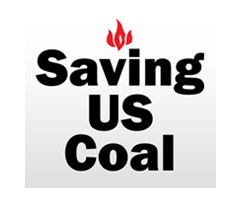
 |
Signature Sponsor

June 28, 2021 - In an exciting new development for the coal industry, at the joint West Virginia Coal Association/West Virginia Coal Mining Institute Meeting held in Morgantown, WV., last week, it was announced that: “coal can not only meet the Biden Administration’s aggressive requirements for greenhouse gas (GHG) reduction, but it can actually be burnt with net-negative emissions.” This was described in a presentation by Ken Humphreys, CFO and Senior Vice President, Technology and Finance, Net-Negative CO2 Baseload Power, Inc.
Ken Humphreys A phase-out of fossil fuels, as some are promoting, compromises the nation’s reliable baseload electricity generation capacity, and would economically destroy coal communities. Prolonging the life of coal plants when co-fired with biomass would preserve the jobs of many thousands of coal miners and utility workers. “A coal generating plant with net-negative CO2 emissions is a coal plant that uses coal and biomass, likely in the form of pelletized wood, as fuel to generate electricity and has carbon, capture, utilization and storage (CCUS) on the backend,” explained Humphreys. “Net-negative emissions are possible because when biomass grows it consumes CO2. So, if you had a coal plant that uses, for example, 20% biomass and 80% coal as fuel, the fuel input stream already has a negative CO2 footprint when it reaches the incoming plant gate. If the plant is equipped with 90%+ carbon capture on its back-end, any CO2 lost to the atmosphere is more than made up for by the negative CO2 footprint of the biomass fraction of the fuel. As a result, the plant’s CO2 emissions are net-negative,” said Humphreys. Coal with biomass co-fueling is the only scalable, baseload power technology that can operate with “net-negative” carbon emissions. While it does require substantial site-specific engineering design work to retrofit an existing coal plant to use a blended coal/biomass fuel, it is practical to do so, if adequate financial incentives are in place. Working with several of the major coal producers and members of Congress, a framework for a financial incentive program has been developed and legislative language is far along in the drafting process. Rep. McKinley, in his leadership role of the House Coal Caucus, has made significant efforts to build House support for this proposal. Conversations in the Senate are equally encouraging and there is optimism about having bipartisan support. A net-negative CO2 baseload power program has been developed and is designed to support rapid modernization of existing plants to keep coal plants in the communities where they are currently located, which translates to new construction jobs as well as thousands of preserved coal mining jobs and plant operating positions in those communities. It also helps maintain the coal supply chain jobs and has considerable economic benefits. The program would place $30B in a dedicated trust through a one-time appropriation. A trust creates the federal financial certainty necessary to motivate private sector co-investment toward long-lived, power plant assets. It avoids the uncertainties of the annual appropriation cycle. While $30B is a sizable investment, in the context of trillion dollar plus infrastructure bills and the scale of the climate challenge, it is manageable. It is proposed that the program would be managed by DOE. The program would make available to coal power plant owners a series of financial incentives to retrofit or replace existing coal plants and Importantly, the program would have built-in protections to right-size incentives. The project is the brainchild of Steve Winberg, CEO of Net-Negative CO2 Baseload Power, Inc., and former Assistant Secretary of Energy, Fossil Fuel together with Humphreys. NewERA Carbon led by Fred Palmer, President, is working closely to secure Congressional funding to make net-negative CO2 coal power a fuel of choice to meet electricity needs as the US energy economy expands. For further information, please contact Ken Humphreys ken@kenhumphreys.com. Additional information can be found here.
Steve Winberg
Fred Palmer
|
 
|

.jpg)
.jpg)